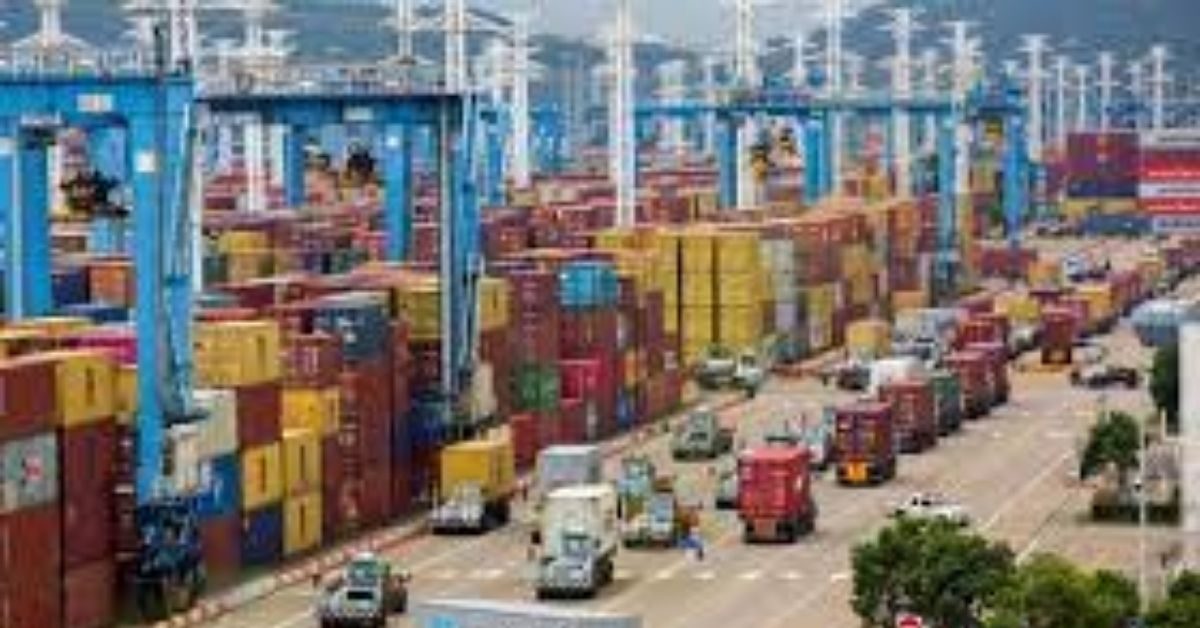The ongoing partial lockdown of the world’s third busiest port in China, and that country’s new rules for quarantining ships with Covid-positive crew members, are further disrupting the supply of critical machine parts to Indian makers of electronic goods and smartphones.
Executives at some of these companies said the disruptions and additional costs may make new models costlier. The automotive industry, struggling with supply chain disruptions, will also be impacted if this problem continues, said industry experts.
One terminal at Ningbo-Zhoushan (NZ) has been closed for a week after a port employee tested Covid positive last Wednesday. It has aggravated fears of trade disruptions in this region.
Moreover, vessels calling China’s ports that have Covid-positive cases on board in the previous two weeks may be quarantined for 21 days.
Kelvin Leung, chief executive for Asia Pacific at DHL Global Forwarding, said the company is working with “customers and partners to divert shipments to other terminals in Ningbo and surrounding cities until operations resume to normal”.
“NZ is among the largest container ports globally and a major origin source for global trade. From India’s perspective, it is an important origin port for a range of containerised shipments particularly solar, auto parts and white goods,” said Prahlad Tanwar, partner and head of logistics and shipping at KPMG.
This adds to ongoing supply chain disruptions in the region that have severely cut availability of critical parts like semiconductors, television panels and others. Home appliance, television and mobile phone makers in India are heavily dependent on China for these components.
Shipping costs have soared 4-5 times since the beginning of the pandemic. The latest issue has led to a further increase.
“Earlier, there were issues with availability of vessels. And now the quarantine rules by Chinese ports and closures will further choke supplies while freight cost has further gone up. There is now no fixed freight cost and sometimes we have to pay even 4-5 times the pre-Covid rate,” said Kamal Nandi, business head at Godrej Appliances and president of the Consumer Electronics and Appliances Manufacturers Association.
Sanjay Kalirona, CEO of electronics brand Gizmore, said logistic companies have doubled container charges to $6,000 in the last few weeks but despite that there is no availability of containers. “We are air-lifting small products but it is not possible for everything,” he said.
An executive with a leading smartphone brand said supply shortages during the festive season may force him to import some consignment from other countries.
Neighbouring ports have been impacted too.
“The closure of Meishan Island Container Terminal at Ningbo-Zhoushan port has led to cargo congestion in nearby ports like Shanghai. With vessel carriers not being able to berth owing to heavy port congestion, carriers are running short of empty equipment across China,” said Jayesh Tanna, a senior vice president at Allcargo Logistics.
He added that during its Golden Week of October 1-7, China will remain closed, prompting customers to move maximum cargo before the start of the National Day holiday to meet festive demand in India.
“A total of 10 vessels did not make a call to Indian ports in August as a majority of them were running out of empty boxes. A rise in the number of blank sailings to India has led to an increase in freight by 100% in the last 3 weeks. Freight rates are expected to increase in September 2021 with further rise expected in blank sailings. Carrier vessels with empty boxes are prioritising ports in US and Europe as they are offering freight rates,” he added.
Source: Economic Times






